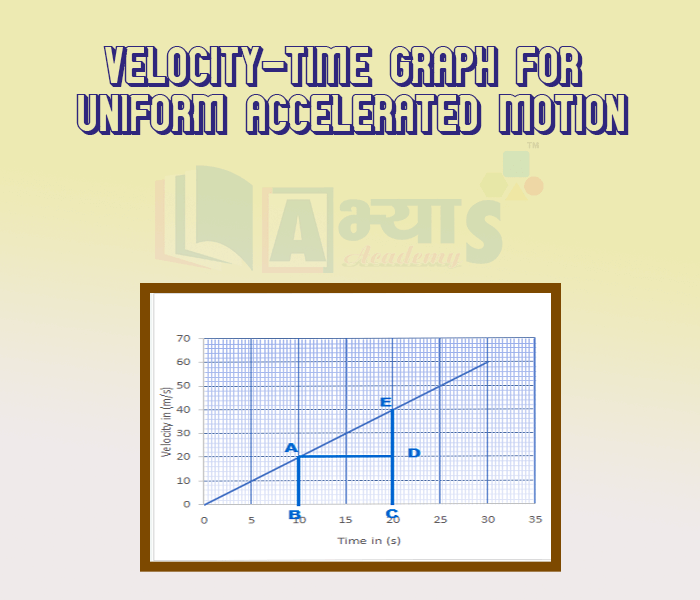Velocity-Time Graph For Uniform Accelerated Motion







Velocity-Time Graph For Uniform Accelerated Motion
(ii) Velocity-Time Graph for Uniform Accelerated Motion
In uniform accelerated motion, the velocity changes with equal amount in equal interval of time. In this case the velocity -time graph is a straight line passing through the origin. Interpretation: The nature of the graph shows that velocity changes by equal amounts in equal intervals of time. In equal interval of time 10 s, the change in velocity is 18 m/s, which remains same, that means the acceleration of the body is constant. Thus, for all uniformly accelerated motion, the velocity -time graph is a straight line. Calculation of distance or magnitude of displacement :To determine the distance moved by the car from its velocity-time graph. The area under the velocity-time graph gives the distance (magnitude of displacement) moved by the car in a given interval of time. Therefore, S = area of ABCDE = Area of the rectangle ABCD + Area of triangle ADE |  |
Example: The velocity -time graph of an ascending passenger lift is shown iin figure below. What is the acceleration of the lift
(i) during the first two seconds?
(ii) between 2nd and 10th second?
(iii) during the last two seconds?
SOLUTION (i) Case I
(ii) Case II
(iii) Case III
Negative sign shown retardation.
Students / Parents Reviews [10]
My experience with Abhyas is very good. I have learnt many things here like vedic maths and reasoning also. Teachers here first take our doubts and then there are assignments to verify our weak points.

Shivam Rana
7thA marvelous experience with Abhyas. I am glad to share that my ward has achieved more than enough at the Ambala ABHYAS centre. Years have passed on and more and more he has gained. May the centre flourish and develop day by day by the grace of God.

Archit Segal
7thBeing a parent, I saw my daughter improvement in her studies by seeing a good result in all day to day compititive exam TMO, NSO, IEO etc and as well as studies. I have got a fruitful result from my daughter.

Prisha Gupta
8thAbhyas is a complete education Institute. Here extreme care is taken by teacher with the help of regular exam. Extra classes also conducted by the institute, if the student is weak.

Om Umang
10thIt has a great methodology. Students here can get analysis to their test quickly.We can learn easily through PPTs and the testing methods are good. We know that where we have to practice

Barkha Arora
10thAbhyas Methodology is very good. It is based on according to student and each child manages accordingly to its properly. Methodology has improved the abilities of students to shine them in future.

Manish Kumar
10thIt was a good experience with Abhyas Academy. I even faced problems in starting but slowly and steadily overcomed. Especially reasoning classes helped me a lot.

Cheshta
10thMy experience with Abhyas academy is very good. I did not think that my every subject coming here will be so strong. The main thing is that the online tests had made me learn here more things.

Hiya Gupta
8thI have spent a wonderful time in Abhyas academy. It has made my reasoning more apt, English more stronger and Maths an interesting subject for me. It has given me a habbit of self studying

Yatharthi Sharma
10thOne of the best institutes to develope a child interest in studies.Provides SST and English knowledge also unlike other institutes. Teachers are co operative and friendly online tests andPPT develope practical knowledge also.
